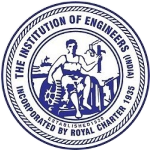Conceptual Model of Quality Management Based on Blockchain in Construction Industry
Abstract
Poor quality in construction could lead to the cash flow disruption, project delays, profit loss in projects due to rework, and some time to the property damage or human loss due to accidents. In order to ensure the quality of work, quality control (QC) departments inspect the construction work compliance with best practices, defined procedures, and specifications. These inspections rely on manual procedures, post-construction evaluation, document-based, and are carried out through a supervisory manner approach from top-down. However, this top-down control-oriented approach does not provide enough motivation for quality control managers, operators, and workers to voluntarily follow quality procedures and specifications. Besides, document-based quality specification compliance assessments have limitations that are difficult to determine whether the required specifications have actually been implemented and are not reliable to measure their real performance as well. In this regard, this study proposes a conceptual framework for Blockchain-based quality management at construction sites, which could ensure security and reliability of information generated through while implementing quality-related specification and procedures by managers and workers using Distributed Ledger Technologies (DLT) and also to encourage them by establishing a compensation structure through performance assessment for activities of each task. The Block chained quality management approach would greatly help shift the traditional top-down and passive quality control process to bottom-up and voluntary manner. It might open a new innovative value-chain structure in the construction quality domain which provides securing reliability of activities required for quality assurance procedures and specification implementation.
Downloads
References
[2] P. Netscher, The true costs of poor quality construction | LinkedIn, (n.d.). https://www.linkedin.com/pulse/true-costs-poor-quality-construction-paul-netscher/ (accessed June 22, 2020).
[3] H. Abdul-Rahman, Some observations on the issues of quality cost in construction, Int. J. Qual. Reliab. Manag. 14 (1997) 464–481. https://doi.org/10.1108/02656719710170693.
[4] H. Abdul-Rahman, P.A. Thompson, I.L. Whyte, Capturing the cost of nonconformance on construction sites: An application of the quality cost matrix, Int. J. Qual. Reliab. Manag. 13 (1996) 48–60. https://doi.org/10.1108/02656719610108314.
[5] Y.A. Olawale, M. Sun, Cost and time control of construction projects: Inhibiting factors and mitigating measures in practice, Constr. Manag. Econ. 28 (2010) 509–526. https://doi.org/10.1080/01446191003674519.
[6] C.S. Park, D.Y. Lee, O.S. Kwon, X. Wang, A framework for proactive construction defect management using BIM, augmented reality and ontology-based data collection template, Autom. Constr. 33 (2013) 61–71. https://doi.org/10.1016/j.autcon.2012.09.010.
[7] J.Y. Lee, O.S. Kwon, J.S. Choi, C.S. Park, A study on construction defect management using augmented reality technology, 2012 Int. Conf. Inf. Sci. Appl. ICISA 2012. (2012). https://doi.org/10.1109/ICISA.2012.6220933.
[8] L.C. Wang, Enhancing construction quality inspection and management using RFID technology, Autom. Constr. 17 (2008) 467–479. https://doi.org/10.1016/j.autcon.2007.08.005.
[9] Y.S. Kim, S.W. Oh, Y.K. Cho, J.W. Seo, A PDA and wireless web-integrated system for quality inspection and defect management of apartment housing projects, Autom. Constr. 17 (2008) 163–179. https://doi.org/10.1016/j.autcon.2007.03.006.
[10] S.N. Yu, J.H. Jang, C.S. Han, Auto inspection system using a mobile robot for detecting concrete cracks in a tunnel, Autom. Constr. 16 (2007) 255–261. https://doi.org/10.1016/j.autcon.2006.05.003.
[11] X. Wang, R. Chen, An Empirical Study on Augmented Virtuality Space for TeleInspection of Built Environments, Tsinghua Sci. Technol. 13 (2008) 286–291. https://doi.org/10.1016/S1007-0214(08)70163-9.
[12] A. Dong, M. Lou Maher, M.J. Kim, N. Gu, X. Wang, Construction defect management using a telematic digital workbench, Autom. Constr. 18 (2009) 814–824. https://doi.org/10.1016/j.autcon.2009.03.005.
[13] D. Vujičić, D. Jagodić, S. Randić, Blockchain technology, bitcoin, and Ethereum: A brief overview, in: 2018 17th Int. Symp. INFOTEH-JAHORINA, INFOTEH 2018 - Proc., Institute of Electrical and Electronics Engineers Inc., 2018: pp. 1–6. https://doi.org/10.1109/INFOTEH.2018.8345547.
[14] J. Li, D. Greenwood, M. Kassem, Blockchain in the built environment and construction industry: A systematic review, conceptual models and practical use cases, Autom. Constr. 102 (2019) 288–307. https://doi.org/10.1016/j.autcon.2019.02.005.
[15] J.A.F. Castellanos, D. Coll-Mayor, J.A. Notholt, Cryptocurrency as guarantees of origin: Simulating a green certificate market with the Ethereum Blockchain, in: 2017 5th IEEE Int. Conf. Smart Energy Grid Eng. SEGE 2017, Institute of Electrical and Electronics Engineers Inc., 2017: pp. 367–372. https://doi.org/10.1109/SEGE.2017.8052827.
[16] A. Dorri, S.S. Kanhere, R. Jurdak, Towards an optimized blockchain for IoT, in: Proc. - 2017 IEEE/ACM 2nd Int. Conf. Internet-of-Things Des. Implementation, IoTDI 2017 (Part CPS Week), Association for Computing Machinery, Inc, 2017: pp. 173–178. https://doi.org/10.1145/3054977.3055003.
[17] J. WANG, P. WU, X. WANG, W. SHOU, The outlook of blockchain technology for construction engineering management, Front. Eng. Manag. 4 (2017) 67. https://doi.org/10.15302/j-fem-2017006.
Copyright (c) 2021 Atul Singh, V R Prasath Kumar

This work is licensed under a Creative Commons Attribution 4.0 International License.
I/We agree with the provision of the Bye-Law 118 of The Institution of Engineers (India) which states that copyright of each paper published in Institution Journal or Annual Technical Volume in full or in Abstract at its centres shall lie with the Institution.

